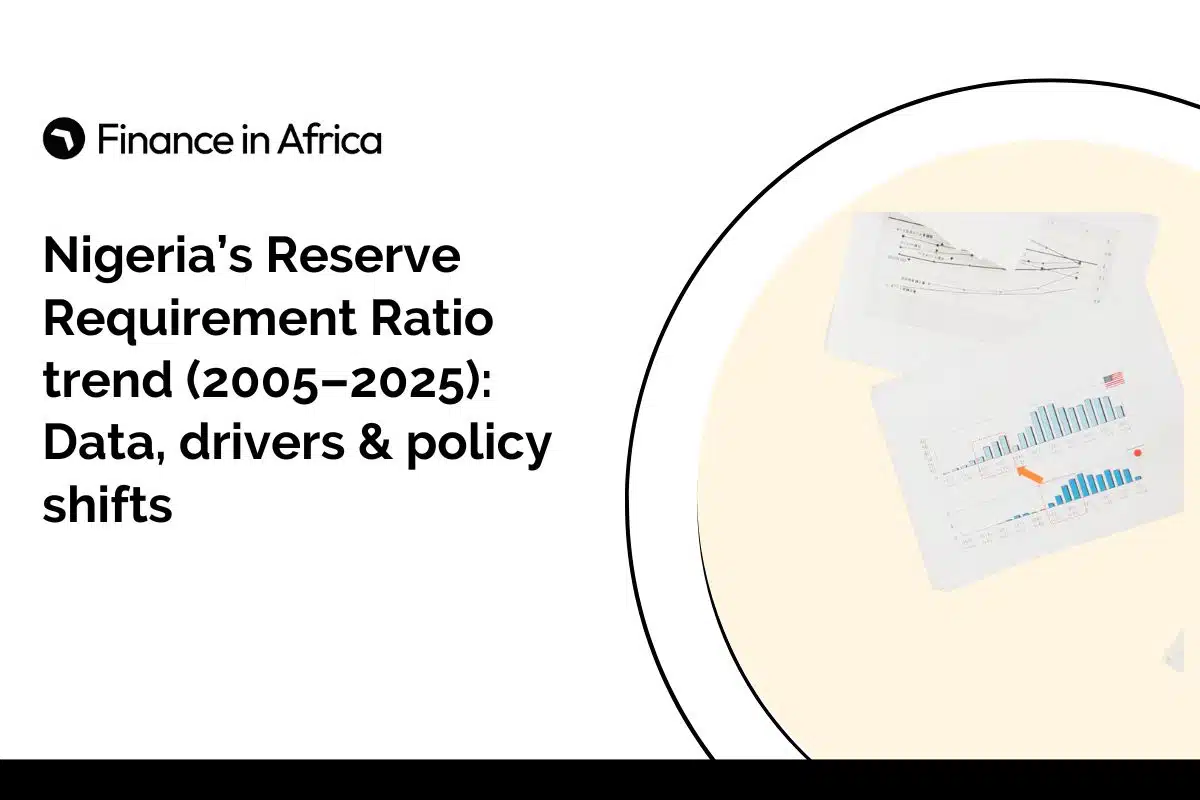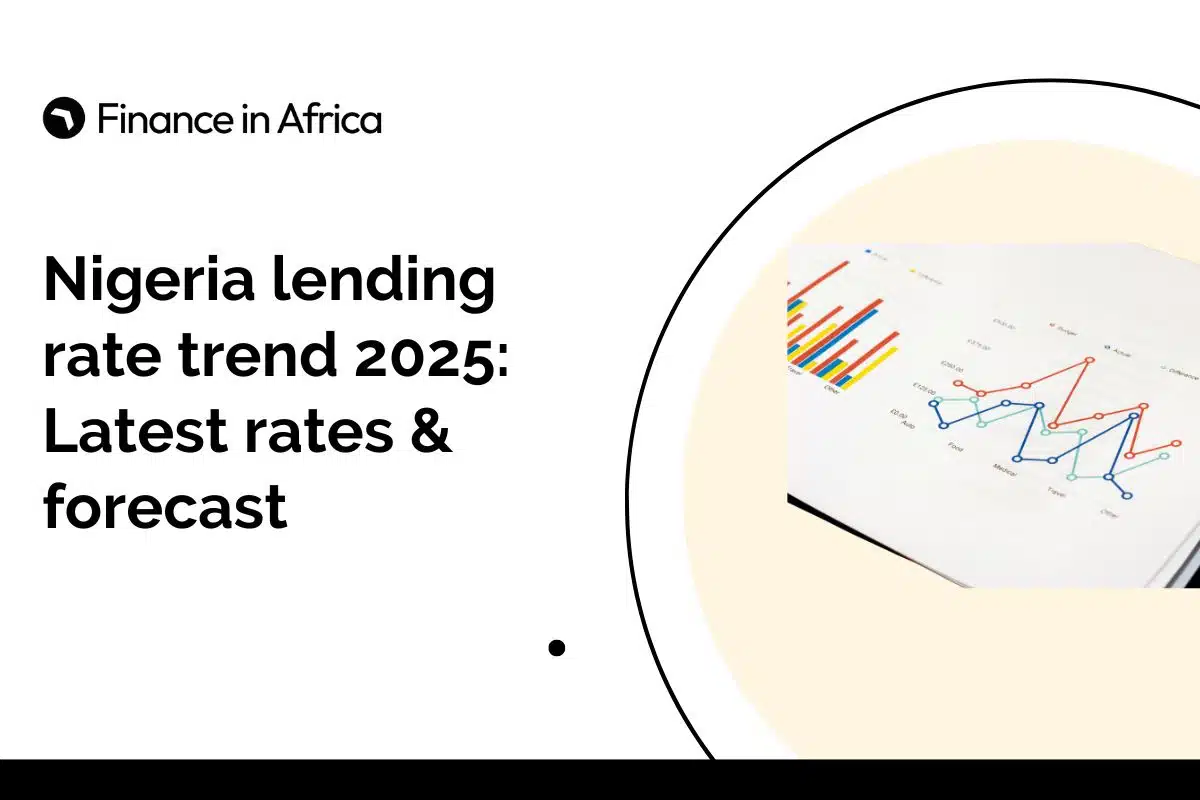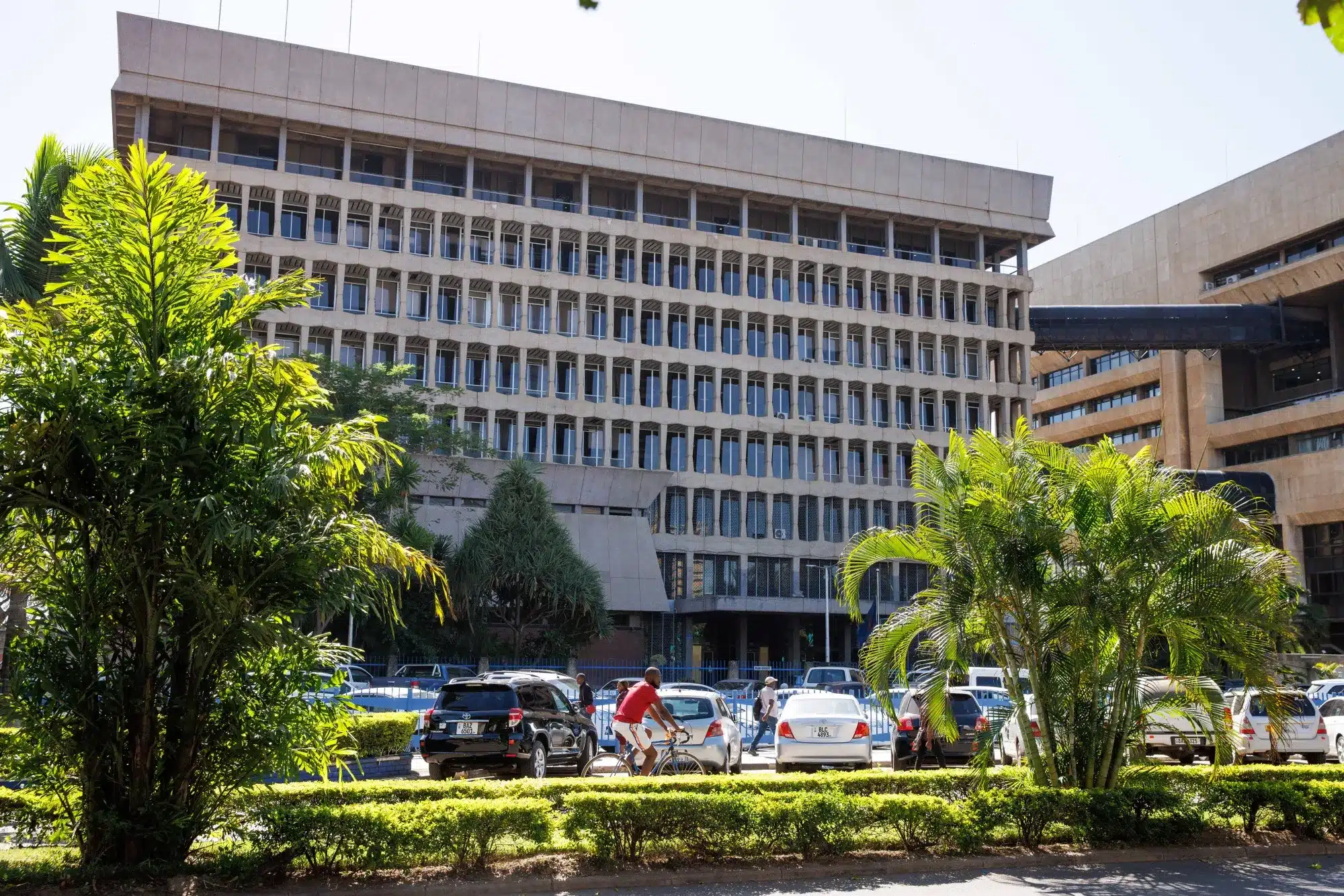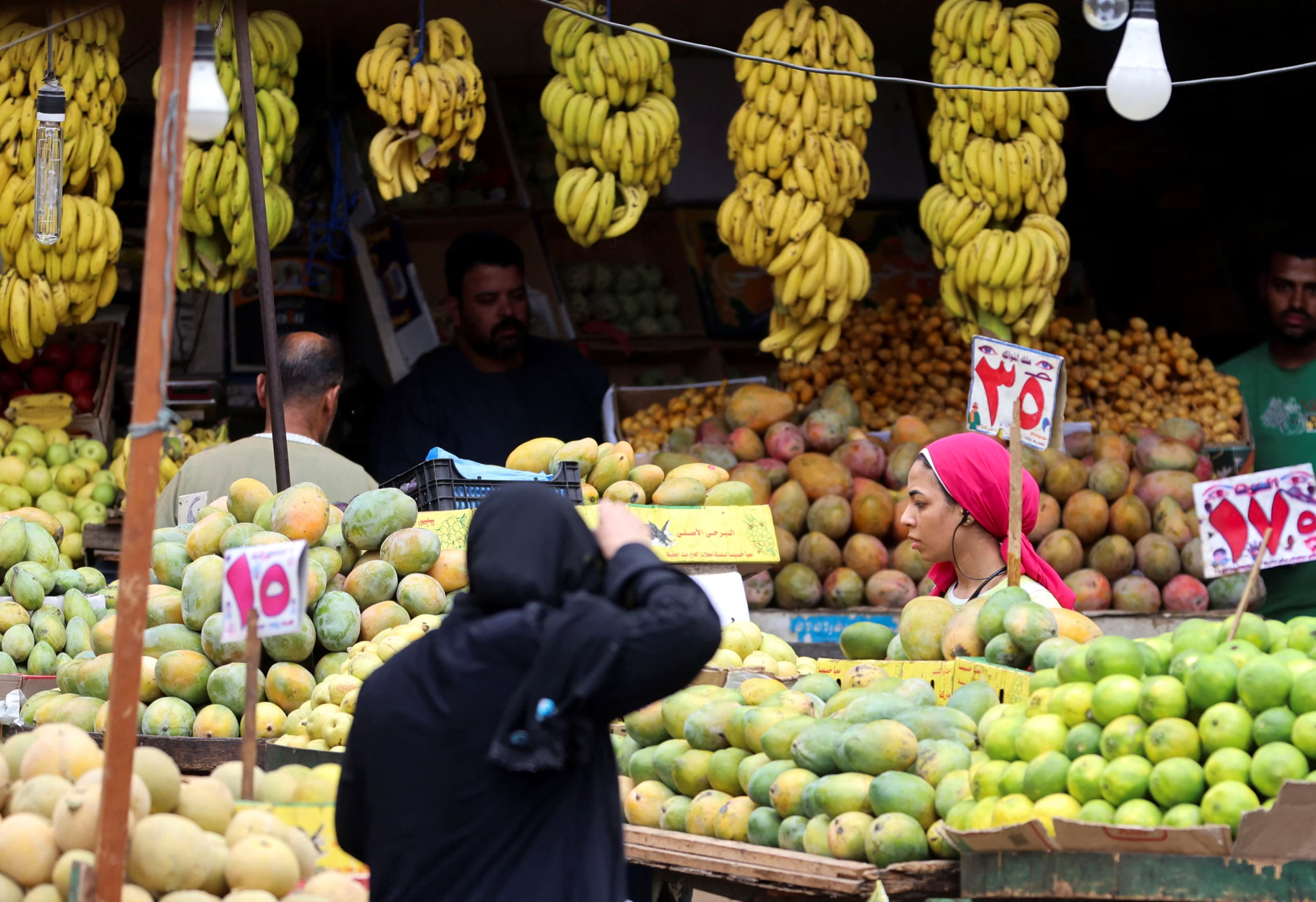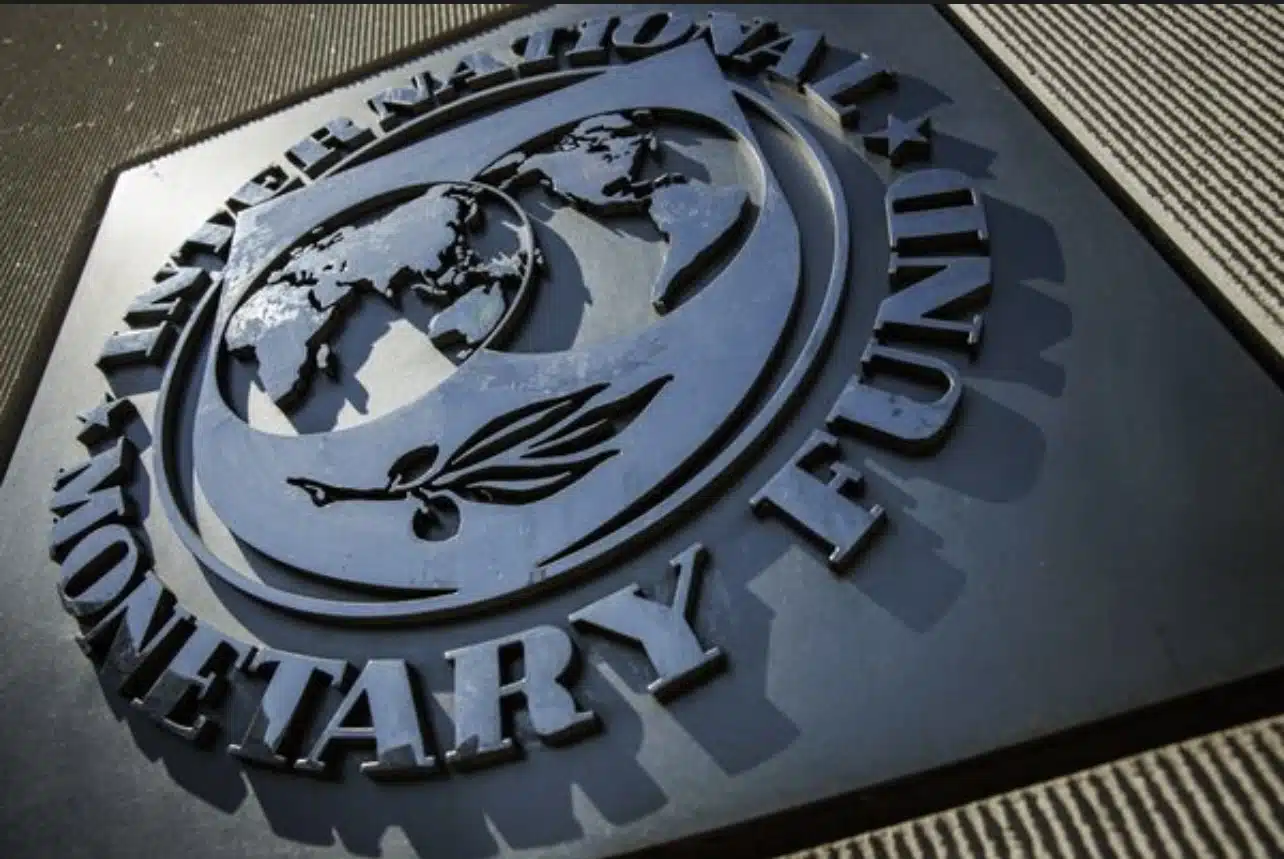Nigeria’s Reserve Requirement Ratio (RRR) trend from 2005 to 2025 shows the Central Bank of Nigeria’s continuous approach to maintaining monetary stability, controlling liquidity, and managing inflation. At the core of the CBN’s reserve requirement policy is the Cash Reserve Ratio (CRR), which has fluctuated over the years.
For readers tracking broader monetary policy shifts, including how interest rate changes impact investments and economic growth, see our detailed guide on Nigeria’s Monetary Policy Rate (MPR) trend
Cash Reserve Ratio (CRR) is a monetary policy tool used by the CBN to manage the money supply and control inflation. Recently, the bank retained the CRR at 50% for deposit money banks, 16% for merchant banks, and 50% for public sector funds.
Given the significant role of Cash Reserve Ratio (CRR) adjustments in Nigeria’s financial system, this article provides a 20-year analysis, examining each adjustment within its macroeconomic context and assessing its impact on liquidity and inflation. You’ll also learn how changes to the CBN’s reserve requirements impacted credit availability, inflation control, and banking stability between 2005 and 2025.
Whether you’re an economist analyzing Nigerian monetary policy trends, a bank treasury or risk manager, a student or researcher studying central bank tools in emerging markets, or an investor monitoring naira liquidity trends, this article will satisfy your curiosity.
Key takeaways
- Nigeria uses the Cash Reserve Ratio (CRR) as a valuable monetary policy tool alongside the Monetary Policy Rate (MPR).
- Cash Reserve Ratio (CRR) is a monetary policy tool used by the CBN to manage the money supply and control inflation.
- When the central bank raises the Reserve Requirement Ratio, banks are required to hold more of their deposits in reserve, reducing funds available for lending. This tightens monetary conditions and contracts the money supply.
- When the central bank lowers the reserve requirement ratio, banks hold less in reserve, freeing up more funds for lending. This can expand the money supply and ease monetary conditions.
- Factors such as inflation, economic growth, banking system stability, fiscal policy, and exchange rates influence changes in the CRR.
What is the Reserve Requirement Ratio?
The Reserve Requirement Ratio (RRR), also known as the Cash Reserve Ratio (CRR), is a key regulatory tool used by central banks to control the amount of funds that financial institutions, such as commercial banks, must hold in reserve against their deposit liabilities. Best put, it is a monetary policy tool used by the CBN to manage the money supply and control inflation.
The Reserve Requirement Ratio represents the percentage of a bank’s total deposits that it must keep in reserves. Nigeria uses the Cash Reserve Ratio (CRR) as a valuable monetary policy tool alongside the Monetary Policy Rate (MPR). It’s essential for effectively managing the Nigerian economy by influencing banking sector liquidity, stabilizing financial markets, and enabling targeted interventions.
Central banks globally assess how well monetary policy measures are transmitted through their economies to guide interest rate and liquidity decisions that support financial stability. Since replacing the Minimum Rediscount Rate (MRR) with the Monetary Policy Rate (MPR) in 2006, the Central Bank of Nigeria (CBN) has used both the MPR and Cash Reserve Ratio (CRR) to steer monetary policy and influence other market rates.
While the MPR indirectly influences economic activity by affecting lending rates and credit access, the CRR directly impacts banks’ reserves, limiting their lending capacity and influencing liquidity and inflation. By mandating banks to hold a portion of deposits with the CBN, the CRR offers more direct liquidity control. Together, the MPR and CRR provide a flexible, complementary approach to achieving monetary policy goals.
When the central bank raises the Reserve Requirement Ratio, banks are required to hold a larger portion of their deposit liabilities in reserve, which reduces the amount of funds available for lending. This can lead to a contraction in the money supply and tighter monetary conditions.
However, when the central bank lowers the RRR, banks can hold a smaller portion of their deposits in reserve, which increases the amount of funds available for lending and potentially leads to an expansion in the money supply and looser monetary conditions.
Who controls Nigeria’s Cash Reserve Ratio (CRR)?
The CBN manages the CRR alongside other key monetary tools, like the MPR, through its Monetary Policy Committee (MPC). The MPC meets regularly to review economic conditions and decide whether to raise, lower, or maintain the MPR to manage inflation, stabilize the naira, and support economic growth.
At its 300th meeting held on May 19th and 20th, 2025, the MPC of the CBN retained the monetary policy rate at 27.50%. The Committee also maintained the asymmetric corridor around the MPR at +500 and -100 basis points. It retains the cash reserve ratio (CRR) for deposit money banks at 50.00% and for merchant banks at 16.00%, while the liquidity ratio remains 30.00%.
Key factors influencing CRR changes in Nigeria
In Nigeria, the central bank primarily adjusts the Cash Reserve Requirement to manage liquidity and curb inflation. Key factors influencing these changes include the level of inflation, the desired direction of monetary policy (tightening or loosening), and the overall stability of the banking system. Below is a broader insight into the key factors influencing CRR changes in Nigeria:
- Inflation: When inflation is high, the CBN may raise the CRR to reduce the money supply and slow down price increases. If inflation is low, it might lower the CRR to encourage lending and boost economic growth.
- Economic growth: The CBN considers the overall condition of the country’s economy when deciding on CRR changes. For instance, if the economy is slowing down, the CBN might lower the CRR to encourage banks to lend more and boost economic activity.
- Banking system stability: The CBN monitors the stability of the banking system. If the system is facing stability risks, the bank might adjust the Cash Reserve Ratio to manage liquidity within the system and ensure banks can handle potential economic shocks. The CRR, a percentage of a bank’s deposits that must be held in reserve with the CBN, directly impacts a bank’s ability to lend and manage its liquidity.
- Fiscal policy: Government spending and borrowing can also affect the overall macroeconomic environment, and the CBN might adjust the CRR in response to fiscal policy actions to maintain macroeconomic stability.
- Exchange rate: Fluctuations in the exchange rate can also influence CRR decisions. A depreciating currency can lead to inflationary pressures, potentially prompting the CBN to tighten monetary policy, including adjusting the CRR.
- Global economic conditions: With Nigeria’s reliance on oil exports, external factors, such as global commodity price fluctuations or changes in global financial conditions, can also influence the CBN’s decisions on CRR.
Historical overview of Nigeria’s Cash Reserve Ratio (2005–2025)
Over the years, the Cash Reserve Ratio in Nigeria, from 2005 to 2025, has seen significant changes and periods of stability. It remained unchanged at 50% as of June 20, 2025. According to Trading Economics, the Cash Reserve Ratio in Nigeria averaged 19.08% from 2007 until 2025, reaching an all-time high of 50.00% in September 2024 and a record low of 1.00% in April 2009.
In 2005, the Central Bank of Nigeria, through its Monetary Policy Committee, adopted several liquidity management and monetary tightening measures to stabilize the economy and anchor inflation expectations. At the January meeting, the MPC reduced the Minimum Rediscount Rate (MRR) by 200 basis points to ease borrowing costs and adopted a two-week maintenance period for the Cash Reserve Ratio (CRR), alongside an exchange rate band of ±3% to support naira stability.
In June of the same year, the Committee raised the CRR from 9.5% to 10% to mop up excess liquidity, ordered the withdrawal of $39.39 million (₦60 billion) in public sector deposits from banks to the CBN, and revised the CRR implementation to occur immediately after FAAC meetings. By November, with concerns over monetary expansion, the MPC approved further sales of CBN instruments and Treasury Bills, directed the sterilization of NNPC deposits, and established a Monetary Policy Implementation Committee to oversee liquidity conditions and policy execution every 48 hours.
Amid the foregoing, in December 2005, the Governor of the Central Bank, Professor Charles Soludo, announced the reduction of the Cash Reserve Ratio (CRR) to 5% from 11%. He confirmed that the move aligned with international best practices and would give bank managers greater flexibility in managing their portfolios. According to the CBN Governor, a low CRR will lower the cost of funds and impact interest rates.
The foregoing laid the foundation for more CRR adjustments in subsequent years. On June 2, 2008, the CBN raised the CRR from 3.0% to 4.0% as part of efforts to tighten liquidity and contain rising inflationary pressures. However, because of global market turmoil, the MPC reduced the CRR from 4% to 2% on September 18, 2008, to inject liquidity and support financial market stability.
On October 10, 2011, the MPC increased the CRR from 4.0% to 8.0%, effective for the maintenance period beginning October 11, 2011, with a 7–2 vote in favor of tightening. This action represents a response to unusual global and domestic economic developments; these developments potentially negatively impact domestic liquidity and renew threats to price and exchange rate stability.
By January 23-24, 2020, the CRR had increased from 22.5% to 27.5%. This remained consistent from 2020 to July 2022, even with domestic and global uncertainty.
However, in September 2022, the CRR was further increased from 27.5% to 32.5%, and it remained in effect across all scheduled MPC meetings through December 2022 and into early 2023, including those in January, March, May, and July 2023.
Subsequently, a sharp increase in the tightening cycle occurred on February 26-27, 2024, as the CRR rose to 45.0% from 32.5%, remaining at that level in March and May 2024. Subsequently, on September 23‑24, 2024, the MPC meeting saw the CRR for Deposit Money Banks increase from 45.0% to 50.0%, while Merchant Banks saw their CRR rise from 14% to 16%, marking the highest recorded ratios in CBN history.
By the February and May 2025 meetings (299th and 300th), the CBN maintained this stance, keeping the CRR at 50.0% for Deposit Money Banks and 16% for Merchant Banks. Here, the Committee acknowledged underlying inflationary pressures driven largely by high electricity prices, persistent foreign exchange demand pressure, and other legacy structural factors.
Note that the CBN Act of 2007 mandates the Central Bank of Nigeria to ensure price stability, stabilize the naira, and maintain a sound financial system. To achieve this, it uses tools like CRR adjustments, MPR decisions, OMO, and forex interventions. In times of high inflation or naira depreciation, the CBN may tighten policy by raising rates or the CRR to curb spending and stabilize prices.
Year-by-Year CRR Timeline (2005–2025)
| Year | CRR (%) | Key Policy Event / Rationale | Inflation (%) | MPR (%) |
| 2005 | 5 (Dec) | To boost liquidity and reduce funding costs. | 11.60 | 13 (MRR) |
| 2006 | 5 (June) | Transitioning to the Monetary Policy Rate (MPR) from the Minimum Rediscount Rate (MRR). | 8.50 | 14 |
| 2014 | 15% private and 75% public | To curb liquidity amid the global oil price collapse and the frivolous demand for dollars. | 8.00 | 13 |
| 2020 | 27 | Inflationary pressure in the economy | 15.75 | 11.5 |
| 2023 | 32.5 | Inflation and FX instability | 28.92 | 18.75 |
| 2025* | 50% for Deposit Money Banks and 16% for Merchant Banks (May) | Anchoring inflation expectations and supporting the Naira. | 22.22 | 27.50 |
Note that the inflation rate percentage used above is for the all-items year-on-year figure for December of the year, except 2025, which reflects inflation in July.
Key policy shifts of Nigeria’s Reserve Requirement Ratio (2005–2025)
Nigeria’s Cash Reserve Ratio (CRR) shifts in line with the country’s economic circumstances. From the banking consolidation era between 2004 and 2009 to the oil price shocks of 2014 and 2016, followed by the COVID-19 era and the double-digit inflation era between 2022 and 2025. The adjustments within these eras indicate the CBN’s response to monetary realities.
This section examines the key phases of Nigeria’s reserve requirement policy from 2005 to 2025.
Banking consolidation (2004–2009)
Nigeria’s banking sector consolidation under Governor Charles Soludo, the Central Bank of Nigeria (CBN), witnessed major reforms, including strengthening bank capital, reducing systemic risk, and improving credit expansion by keeping the Cash Reserve Ratio (CRR) relatively stable and relying more on Open Market Operations (OMOs) and exchange rate adjustments to manage liquidity.
While this period involved significant banking reforms, the CRR remained relatively stable. The CRR, which was reduced to 5% from 11% in December 2005 to give bank managers greater flexibility in managing their portfolios, was further reduced to 2% by September 18, 2008, to inject liquidity and support financial market stability.
Oil-price shock 2014–2016
The 2014-2016 oil price shock was a period of significant decline in global oil prices, driven primarily by increased supply and slowing global demand. This shock, which led to a 70% drop in prices from mid-2014 to early 2016, had a devastating effect on Nigeria’s economy, which is heavily reliant on oil revenue. Meanwhile, the CBN responded with various measures, including adjusting the CRR.
From January 2014, the public sector CRR increased from 50% to 75%, while the private sector CRR was retained at 12% and raised to 15% in March of the same year. However, in May 2015, the CBN harmonized the CRR for both the public and private sectors at a single rate of 31%, and by the end of 2016, it had dropped to 22.5%.
Amid this response to mitigate the negative impact of the oil price shock on the Nigerian economy, particularly in terms of government revenue, exchange rate stability, and overall economic growth, the CBN also raised the Monetary Policy Rate (MPR) and adjusted the official exchange rate.
COVID-19 Era 2020
The global spread of the COVID-19 pandemic that led to the collapse of international oil prices put Nigeria’s economy in crisis mode. In early 2020, the CBN increased the Cash Reserve Ratio (CRR) from 22.5% to 27.5% to reduce excess liquidity in the banking system and curb speculative demand for foreign exchange. The increase in CRR effectively reduced the amount of money banks could lend, aiming to stabilize the naira and control inflation.
Double-Digit Inflation 2022–2024
The headline inflation rate rose from 21.34% in December 2022 to 34.19% in November 2024 in Nigeria. During this period, the CBN significantly adjusted the Cash Reserve Ratio upwards in response to persistent double-digit inflation. The CRR was initially raised to 27.5% in early 2020, but in September 2022, it was increased again to 32.5%, as inflationary pressures intensified.
Subsequently, in 2024, the CBN further raised the CRR to 45% for Deposit Money Banks, reflecting their continued concern over high inflation, while adjusting the CRR for Merchant Banks to 14%.
Also, in the later part of 2024, the CBN increased the CRR again, setting it at 50% for Deposit Money Banks and 16% for Merchant Banks. These adjustments meant that banks were required to hold a significantly larger share of their deposits with the CBN, effectively reducing the amount available for lending.
Throughout this period, the CBN maintained a tight monetary policy stance and emphasized its continued focus on price stability, including additional CRR adjustments. This move focused on controlling money supply and managing inflationary pressures, which had been aggravated by factors such as rising energy prices and exchange rate volatility.
Current Outlook 2025: potential easing amid moderating inflation.
In May 2025, the Monetary Policy Committee (MPC) decided to hold the Cash Reserve Ratio (CRR) for both Deposit Money Banks and Merchant Banks. Specifically, the CRR remained at 50% for Deposit Money Banks and 16% for Merchant Banks. The Committee also retained the Monetary Policy Rate (MPR) at 27.50%.
Amid the foregoing, in June 2025, Nigeria’s annual inflation rate eased for the third consecutive month to 22.22%, its lowest since April 2023, driven by base effects and a relatively stable exchange rate. However, food inflation, which forms the largest share of the inflation basket, rose slightly to 21.97% from 21.14% in May, likely due to increased demand and price hikes of up to 35% during the Sallah festivities.
Core inflation, which excludes food and energy prices, also edged up to 22.76% from 22.28% in the previous month. According to Trading Economics, consumer prices increased by 1.68% in June, up from 1.53% in May.
However, analysts are raising red flags over conflicting monetary policies that could derail Nigeria’s vision of becoming a $1 trillion economy by 2030. Analysts confirmed that the policy mix is contradictory, indicating that while recapitalization aims to increase banks’ firepower for credit expansion, the 50% CRR effectively sterilizes liquidity, leaving lenders scrambling to manage their balance sheets rather than finance growth.
Additionally, the report estimates that Nigerian banks lost $551.57 million (₦840.2 billion) in income in the 2024 financial year due to the new CRR policy, surpassing the cumulative $565.94 million (₦862.1 billion) lost under the old discretionary framework between 2020 and 2023. Recall that the CRR was raised from 32.5% to 45.00% in February 2024 and further raised to 50% in September 2024.
As the CBN remains cautious because of persistent inflation and FX risks, easing economic pressures and calls for growth may lead to a gradual cut in CRR in 2025. However, major reductions are unlikely without lasting stability.
According to Daily Trust, analysts from the Nigeria Economic Summit Group said easing of inflation was also expected to influence monetary policy, predicting that the CBN’s Monetary MPC may adopt a more accommodative stance in late 2025, potentially lowering interest rates to stimulate economic activity.
Impact of CRR Adjustments in Nigeria
Cash Reserve Ratio adjustments can significantly impact the banking sector and Nigeria’s economy. Through influencing how much liquidity banks can access, CRR changes affect lending, inflation control, investment, and overall economic growth. Let’s examine the impacts:
- High CRR and credit growth: Since the CRR is the percentage of a bank’s total deposits that it must hold as reserves with the central bank, a higher CRR means banks have less money available to lend, potentially leading to lower loan-to-deposit ratios. A lower loan-to-deposit ratio indicates banks are lending out a smaller portion of their deposits, which can stifle economic activity. The loan-to-deposit ratio (LDR) is a financial metric that compares a bank’s total loans to its total deposits. In April 2024, the CBN lowered banks’ loan-to-deposit ratio to 50%.
- Exchange rate management: The CBN uses CRR as a tool to manage the exchange rate. By increasing the CRR, the CBN can reduce the amount of money available in the market, which can help to stabilize the exchange rate and curb inflation. This is particularly relevant when the CBN injects liquidity through OMO, as the increased liquidity can put downward pressure on the currency.
- CBN’s liquidity management: With CRR used as a tool for managing liquidity in the banking system, the CBN can reduce the amount of money available in the system by increasing the CRR, potentially curbing inflation and managing exchange rate pressures. Likewise, the apex bank can lower the CRR to inject liquidity into the system, potentially stimulating economic activity.
- A high CRR can negatively impact bank profitability, as it reduces the amount of funds available for lending and earning interest. However, it can improve the stability of the banking system by reducing excessive lending and potential risks.
- The CBN can provide CRR refunds or rebates to banks that lend to specific sectors, like agriculture, manufacturing, or small and medium-sized enterprises (SMEs). This incentivizes banks to lend more to these priority sectors, which can be crucial for economic development.
In July 2018, the CBN, through the MPC, pledged to refund the Cash Reserve Ratio (CRR) to banks under certain conditions. Part of such conditions is banks’ lending to Small and Medium Enterprises (SMEs). The move is to spur bank lending to high-impact sectors of the economy.
Comparison of CRR in Nigeria, Kenya, and Ghana
The comparison of CRRs in Nigeria, Kenya, and Ghana shows the different approaches central banks used in managing their respective economies. As of mid-2025, Nigeria maintains the highest CRR among the four countries, with a 50% CRR for Deposit Money Banks and a 16% CRR for Merchant Banks.
With an inflation rate of 22.97% in May and 22.22% in June, this indicates CBN’s efforts to combat inflation, curb excess liquidity, and stabilize the naira amid ongoing exchange rate volatility and imported inflation.
For Kenya, available data indicate that the Reserve Requirement Ratio (CRR) for commercial banks stood at 4.3% in 2023, showing a relatively accommodative monetary policy stance. In the same year, Kenya’s economy expanded by 5.2%, up from 4.8% in 2022, signaling steady growth momentum. Inflation, however, edged up slightly to 7.7% in 2023, compared to 7.6% in 2022.
This was primarily driven by core inflation (32%), fuel inflation (26%), and a 9% year-on-year increase in the Producer Price Index (PPI), contributing to cost-push inflation. By early 2025, the Central Bank of Kenya had adjusted its policy rate to 10.75% in February, a slight decline from 11.25% in January, as it navigated the balance between controlling inflation and providing economic support.
Conversely, in 2024, the Bank of Ghana introduced a new Cash Reserve Ratio (CRR) regime that links CRR requirements to loan-to-deposit ratios (LDRs). This means that banks with higher LDRs, indicating a greater proportion of loans relative to deposits, will have lower CRR requirements, while those with lower LDRs will face higher CRR requirements.
Subsequently, in May 2025, the Bank of Ghana announced a revision to the dynamic cash reserve ratio (CRR) for commercial banks, reverting to a currency-matched CRR, meaning that the CRR for all banks will be maintained in their respective currencies: foreign currency reserves for foreign currency deposits and domestic currency reserves for domestic currency deposits.
Ghana’s Cash Reserve Ratio (CRR) is a tiered system that varies based on banks’ loan-to-deposit ratios (LDR). Banks with LDRs below 40% must hold a CRR of 25%, those with LDRs between 40% and 55% have a 20% CRR, and banks with LDRs above 55% are subject to a 15% CRR. Amidst this, Ghana’s inflation rate dropped to 13.7% in June 2025, marking its lowest level in over four years.
Conclusion
This article has shown that between 2005 and 2025, Nigeria’s CRR shifted from a moderate tool for monetary moderation to a powerful instrument of aggressive liquidity tightening. The CRR increased significantly from 5% in late 2005 to 50% in 2025, indicating the Central Bank’s growing reliance on reserve requirements as a key defense against inflation, currency instability, and systemic excess liquidity.
When the central bank raises the Reserve Requirement Ratio, banks are required to hold a larger portion of their deposit liabilities in reserve, which reduces the amount of funds available for lending. This can lead to a contraction in the money supply and tighter monetary conditions.
However, when the central bank lowers the Reserve Requirement Ratio, banks can hold a smaller portion of their deposits in reserve, which increases the amount of funds available for lending and potentially leads to an expansion in the money supply and looser monetary conditions.
At the core of Nigeria’s reserve ratio history, it is evident that factors such as inflation, economic growth, banking system stability, fiscal policy, and exchange rates influence changes in the CRR. Meanwhile, research confirms that the monetary policy tool has a negative and insignificant effect on the profitability of deposit money banks in Nigeria.
It recommends that the monetary authority be cautious of changes in cash reserve requirements, especially when increasing the CRR, as the increase in CRR leads to a decrease in the amount of cash available for commercial banks to lend out as loans and advances.
Disclaimer
This publication, review, or article (“Content”) is based on our independent evaluation and is subjective, reflecting our opinions, which may differ from others’ perspectives or experiences. We do not guarantee the accuracy or completeness of the Content and disclaim responsibility for any errors or omissions it may contain.
The information provided is not investment advice and should not be treated as such, as products or services may change after publication. By engaging with our content, you acknowledge its subjective nature and agree not to hold us liable for any losses or damages arising from your reliance on the information provided. Always conduct your research and consult professionals where necessary.

